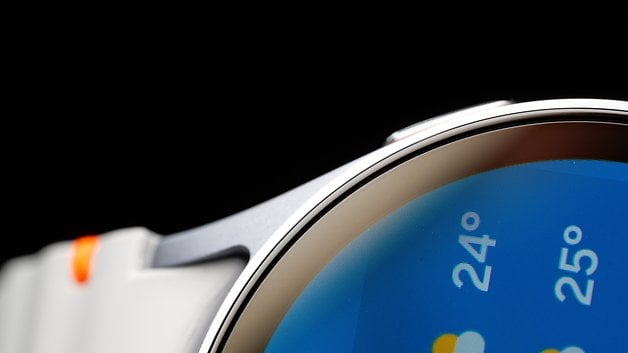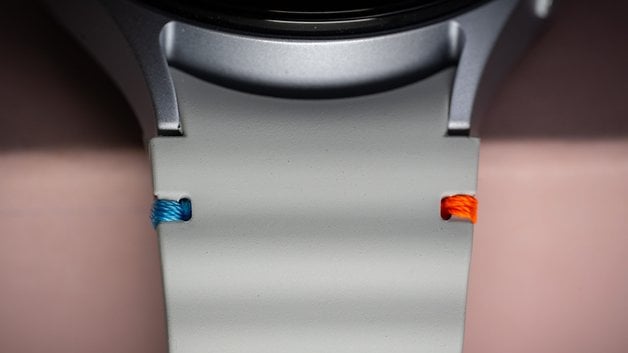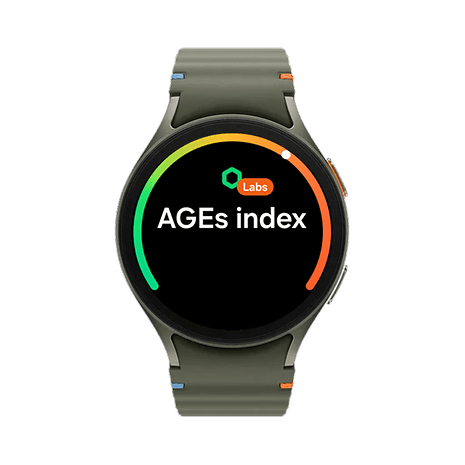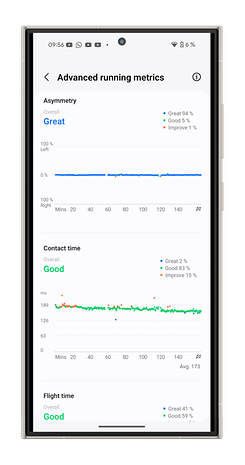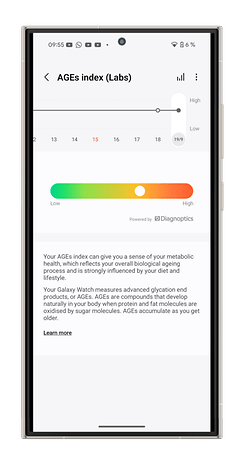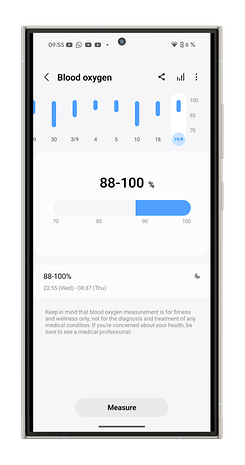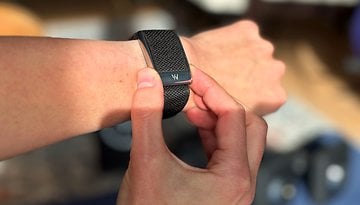Samsung Galaxy Watch 7: The Best Yet, Except for One Key Issue
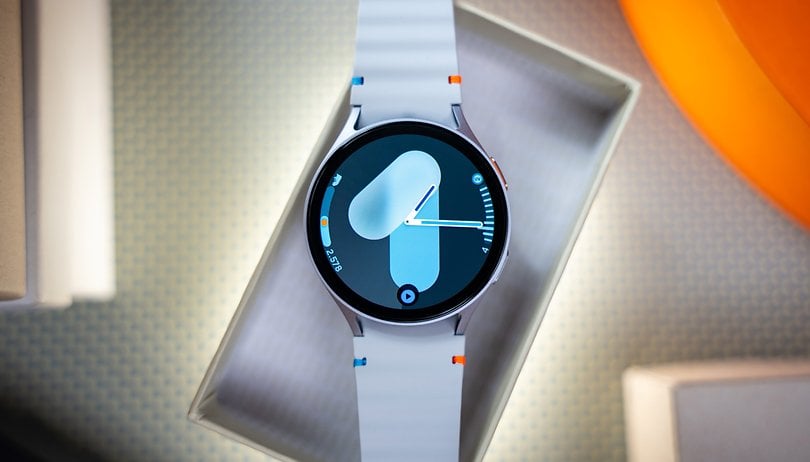

After the Galaxy Watch experienced a sharp price increase last year, the basic model has something else to be afraid of in 2024. With the new Galaxy Watch Ultra, Samsung offers a powerful alternative. Can the Galaxy Watch 7 keep up? For whom will the purchase be worthwhile? Let’s dive into this Galaxy Watch 7 review to find out.
Good
- Attractive and simple case
- Very good display with a great operating concept
- Unique tracking functions that offer even more
- Easy connection to Android smartphones
Bad
- Battery life is still too short
- Auto-tracking badly fragments workouts
- Some features remain Samsung-exclusive
- Not compatible with Apple's iOS

In a nutshell
Samsung raised the price of its Galaxy Watch smartphones last year. One year later, with the integration of Galaxy AI, extended tracking functions, and a new SoC, there are finally reasons to spend more on the smartwatch.
While the battery life remains too short for comfort, and you should definitely take a closer look at the new Galaxy Watch Ultra (review) before buying, the Watch 7 is still the best smartwatch for Samsung fans. We also think it is one of the best Android smartwatches ever, so read on to find out why.
Design, Display & Durability
While Samsung set bold accents with the Galaxy Watch Ultra, almost everything remained the same with the basic model. Samsung retained the old chassis and display sizes, although the two variants have grown slightly compared to last year. Thanks to AMOLED technology, fantastic displays are once again back in vogue. With 5ATM water resistance and sapphire glass, robustness is also top-class.
Pros:
- Wonderful build quality.
- Razor-sharp, bright displays.
- Sapphire glass is not par for the course in this price range.
Cons:
- Few changes compared to the previous year.
- No improvements to the display.
- Digital bezel is still a little fiddly.
Feedback from Samsung's customers regarding the Galaxy Watch's design seems to have been positive in 2023. Samsung is sticking to the design line from previous years and only introduced a new color variant — the green model. While this is a little boring for technology journalists who also reviewed the Galaxy Watch 6 last year, Samsung fans don't have to get used to it.
In any case, the minimalist design in combination with Samsung's high-quality AMOLED panels is good enough in 2024. The Galaxy Watch 7 can be worn for a truffle kebab dinner somewhere posh as well as in a smoky pub. The colorful decorations on the standard wristband are a matter of personal preference but as you can see from my photos, they are at least well made.
This statement can be applied to the entire case of the Galaxy Watch 7. With tiny gaps and up to 5 ATM water protection, you can take it in the shower or for a swim. While Samsung also uses the same sapphire glass in the most affordable smartwatch model as in the new Ultra model, this model has a water resistance of 10 ATM.
Another special feature of the Ultra model is the rotating crown, which is already familiar to Apple Watch fans. With the Galaxy Watch 7, Samsung is sticking to the two buttons on the right-hand side of the case and on the digital bezel. You can swipe around the outside area of the circular case to scroll through menus. This works well in everyday use, but is less convenient as opposed to an "actual" control option.
Overall, the design, display and brightness are the same. A little boring, but Samsung's watch design remains tried and tested!
Software & Compatibility
Our Galaxy Watch review unit ran on One UI 6 for the Watch version as of September 2024 and featured the June 1, 2024 security patch. Samsung is bringing the "Galaxy AI" AI engine to the smartwatch as a major innovation. In everyday use, however, the operating system based on Google's WearOS proved its worth primarily due to its high level of expandability, wide range of functions, and intuitive menu navigation.
Pros:
- High expandability thanks to Wear OS.
- Galaxy AI integration is an innovation.
- Intuitive operation and clear menu navigation.
Cons:
- Extremely many notifications by default.
- Some functions can only be used with Samsung phones.
- Not compatible with Apple's iOS.
As is the case with many manufacturers, Samsung's motto in 2024 is: How do we get "AI" as a buzzword on as much product packaging as possible? The magic word is "Galaxy AI" and is one of the major innovations in OneUI 6.0 (review). In the Watch version, Samsung will primarily introduce new AI fitness functions, which I will dive into in greater detail later.
The graphical user interface of the operating system has also been optimized. Just like last year, OneUI Watch is one of the most beautiful smartwatch operating systems. What I particularly liked about it, apart from the pretty menus and animations, is the consistent operating concept. Menus can be closed in the same way 90 percent of the time, swipe gestures don't suddenly take on different functions when you're wading knee-deep in the operating system and it's really easy to adapt to.
To optimize my user experience, however, I eventually limited the notifications that annoyed me, especially during sports. I've been using the Whoop 4.0 for a long time (read our review), which was particularly impressive as a motionless wristband in everyday life. Without customization, the Galaxy Watch 7 sent far too much information to my wrist. Why do I want to know that I've already been cycling for four minutes? Well ...
What I found very annoying in this review, however, is that the Galaxy Watch 7 is also not compatible with Apple's iOS. Even with an Android smartphone, some functions such as remote control of the camera remain exclusive to Samsung's ecosystem. Remaining within Samsung's ecosystem naturally becomes more interesting. However, I have always found the "walled garden" concept as an open door to criticism.
Technology & Tracking
Pulse measurement, temperature measurement, blood oxygen level, and even blood measurement and an ECG -with its BioActive sensor, Samsung offers the widest range of functions in the world of smartwatch sensors. While there is a new feature here with AGE measurement, Samsung is also upgrading this timepiece from a technical perspective: the SoC used offers more power than in the previous model.
Pros:
- High number of tracking functions.
- Great wealth of information in the Samsung Health app.
- LTE support and great SoC performance.
Cons:
- Blood pressure measurement and ECG support only for Samsung phones.
- Auto-tracking sometimes delivers extremely fragmented workouts.
- Not compatible with external sensors.
Before we dive into the tracking functions together, I would like to take a look at the Galaxy Watch 7's hardware. Samsung provided me with the LTE version for my review. For an additional $50, you can set up an eSIM and operate the Galaxy Watch independently of your smartphone.

The seventh Galaxy Watch generation uses Samsung's own Exynos W1000 SoC, which was manufactured using the 3 nm process. In the basic model, it is supported by 2 GB of RAM. Music, photos and other data can be stored on 32 GB of internal memory, of which only 21.1 GB is actually available. This means that the Galaxy Watch 7 is in no way inferior to the Ultra model. That's great to hear!
Tracking functions for sports
The Galaxy Watch 7 offers over 100 different workouts that can be tracked directly on the wrist. Thanks to the dual GPS module, the smartwatch can record the distance covered, including pacing and changes in altitude. At the very least, it continuously records the heart rate and classifies it according to personalized heart rate zones. What I found to be really practical in everyday life was the auto-tracking.
The Galaxy Watch 7 automatically recognizes activities and records a bike ride to the office as a workout. This provides a good overall impression of all the efforts you make to live each day actively. However, it is annoying the watch often fragments of records when automated. For instance, it ends one workout and begins a new one when you are stuck at the traffic lights. This results in chaos in the Samsung Health app.

In addition to daily cycling activities, I primarily used the Galaxy Watch 7 to track my runs as I was training for a marathon during the review duration. Here, the internal GPS of the watch deviated slightly from the GPS of my iPhone 13 mini. During a 30 km run, the watch deviated by an entire kilometer. Since the iPhone's GPS is certainly subject to fluctuations, I wouldn't see this as a major point of criticism.
The recording of the heart rate worked quite reliably. There are only small differences here compared to my Whoop 4.0, which I used as a reference point during the review until it gave up the ghost. What Samsung also offers are values that inform me about my running technique. It is interesting to see my contact time with the ground and cadence when running. For a precise analysis, however, I would recommend external hardware that doesn't perform measurements via the wrist.
The fact that this cannot be connected to the Galaxy Watch 7 or the Samsung Health app is another major point of criticism for Samsung. Garmin smartwatches, for example, do this much better.
Sleep tracking and recovery tracking
Of course, the Galaxy Watch 7 does not stop recording data about your body after a workout. Here, Samsung offers unique features such as body composition measurement, blood pressure measurement and, most recently, a classification of "Advanced Glycation Endproducts". The latter are produced when carbohydrates react with the body's own proteins and should allow conclusions to be drawn about a healthy lifestyle.
It is very interesting to view and analyze these values. I certainly think that they can motivate people to lead a more active and healthy lifestyle. However, I would only ever see them as trend or guideline values. If you have pre-existing conditions or want to use the watch to monitor your blood pressure, I would advise against it. In this case, Huawei offers the Watch D (review), a model that has an integrated blood pressure cuff. Even so, a proper medical device is always better.
Back to the Galaxy Watch 7! Together with the developers of the "Sleep Cycle" app, it offers added value when it comes to sleep tracking. While sleep phases and blood oxygen levels can be conveniently tracked in the morning, Samsung can also detect the presence of dangerous sleep apnea. You place the smartphone on the bedside table and it uses the microphone to detect whether you experience breathing interruptions at night due to snoring.

Samsung bundles the recovery values, to which breathing exercises, a stress monitor and more are added, in the new "Energy Score". This indicates your recovery and can be very helpful when planning workouts for the day. As a Whoop user, I personally love using these kinds of "readiness" functions but there's still a big problem with the Galaxy Watch 7 ...
Battery & Charging
... the battery life! The Galaxy Watch 7 generally only lasted about a day in the review. However, according to the manufacturer, it should last 40 hours without the Always-On Display enabled and 30 hours with AOD. At least the charging time is short at around one hour using the supplied charging dongle. Thanks to Qi charging, the Watch 7 can also be charged wirelessly.
Pros:
- Charging time of around one hour is suitable for everyday use.
- Wireless charging is supported.
Cons:
- Needs to be charged daily ...
- ... which limits seamless tracking.
- Energy-saving mode is not really effective.
Despite featuring more effective processors, Samsung is stuck with a one-day battery life in its smartwatches. My user behavior involves daily tracking of workouts and a rather low use of the smart functions, making the manufacturer's specifications of 30 to 40 hours quite far off a realistic test case. Although charging is quick and easy thanks to the magnetic charging puck and fast charging, this bothered me immensely during the review.
After a day of tracking a few professional bike rides and recording 10 - 15 km of running training in the evening, the Galaxy Watch 7 is definitely empty in the evening. When dusk fell and I had a social event to attend to, Camila laughed at me with the Galaxy Watch Ultra on her wrist as my model had run out of power despite my attempts to save energy. The Mobvoi TicWatch Pro 5 Enduro (review) or the Amazfit T-Rex 3 (review) also offer longer running times. I would have to charge them beforehand for sleep tracking and by doing so, I had to wait an hour.
In other words, I often charged the watch overnight which led to missing out on important fitness information such as sleep quality or the new AGE tracking. Of course, I'm used to the four-day battery life of the Whoop 4.0 but I find it really annoying to charge a smartwatch every day!
Technical Specifications
| Technical Specifications | |
|---|---|
| Product | Galaxy Watch 7 |
| Image |  |
| Models | 40 mm | 44 mm |
| Colors | 44 mm: Green, Silver 40 mm: Green, cream |
| Display | Super AMOLED | Sapphire glass | Full Color Always On Display 1.3-inch | 432 × 432 pixels | 40 mm or 1.5-inch | 480 × 480 pixels | 44 mm |
| Memory and SoC | Exynos W1000 (five-core 3 nm) 2 GB RAM | 32 GB storage |
| OS | One UI 6 Watch, based on Wear OS 5 Powered by Samsung |
| Sensors | Acceleration, position, barometer, ambient light, compass, Samsung BioActive Sensor (heart rate, ECG and BIA), infrared temperature sensor |
| OS | One UI 6 Watch based on Wear OS 5 Powered by Samsung |
| Dimensions and weight | 40 mm: 40.4 × 40.4 × 9.7 mm, 28.8 g 44 mm: 44.4 × 44.4 × 9.7 mm, 33.8 g |
| Connectivity | LTE, Bluetooth 5.3, Wi-Fi 2.4+5GHz, NFC, GPS (L1+L5) / Glonass / Beidou / Galileo |
| Compatibility | Android 11 or higher and with more than 1.5 GB RAM |
| Certification | 5 ATM + IP 68 / MIL-STD-810H |
| Battery | 40 mm: 300 mAh 44 mm: 425 mAh |
Conclusion
Samsung continues to serve the market well in 2024 when it comes to smartwatches. The manufacturer proved it can respond to current trends in the wearable world with the Ultra model. It is therefore all the more commendable that the Galaxy Watch 7 experienced very few changes. Samsung's basic smartwatch is still simple, fashionable, and requires no adjustment when switching from an earlier model.
Although so much remains the same, Samsung made some internal optimizations this time around. A new SoC ensures better energy efficiency and a wonderfully smooth user experience. In addition to the already market-leading tracking functions, the AGE value and the AI-supported “Energy Score” are new benchmarks that promote an active and healthy everyday life.
Even if these and all other values of the Galaxy Watch 7 should be seen more as guidelines, they motivate you to eat healthier and exercise more often. That's exactly what you should use a smartwatch for.
What Samsung absolutely needs to do for the future, however, is to vastly improve the battery life of its smartwatches. Both the new Galaxy Watch Ultra and the Galaxy Watch 7 last a day in reality. This has a negative impact on the "seamlessness" of fitness tracking. The competition offers more here, as you can read in our large smartwatch overview.
Nevertheless, the Watch 7 is a successful upgrade from its predecessor. In a way, it is what Samsung should have offered last year after the price increase — that gives it 4.5 stars!


